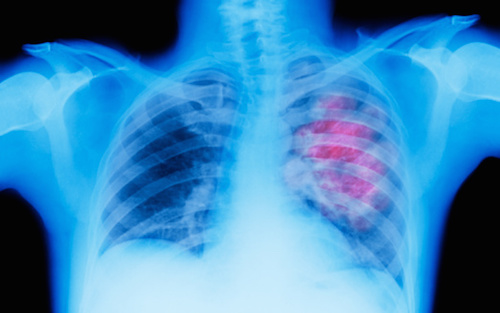
Approximately 15% of non-small cell lung cancers have a mutation in a growth receptor called EGFR, causing tumor cells to grow uncontrollably. Researchers developed an effective drug that inhibits EGFR and kills cancer cells. However, the tumors can grow back.
A team at Cold Spring Harbor Laboratory (CSHL) wanted to understand the molecular mechanisms behind this relapse and how to prevent it. The researchers discovered that a small percentage of drug-resistant cancer cells were already present before treatment. In addition, their findings suggest that microRNA miR-335 expression determines the “state” of the cancer cells. This work is published in eLife, in the paper.
Approximately 15% of non-small cell lung cancers have a mutation in a growth receptor called EGFR, causing tumor cells to grow uncontrollably. Researchers developed an effective drug that inhibits EGFR and kills cancer cells. However, the tumors can grow back.
Raffaella Sordella, Ph.D., visiting scientist at CSHL discovered that a small percentage of drug-resistant cancer cells were already present before treatment. Instead of relying on EGFR, these cells are dependent on the gene AXL for survival. Furthermore, Sordella and colleagues observed that the cells could transition between these drug-sensitive and drug-resistant “states.” When patients finish treatment, random modifications constantly occur in the remaining cells, causing both types of cells to grow back.
The authors noted that “augmented levels of AXL and GAS6 have been found to drive resistance to EGFR tyrosine kinase inhibitors such as Erlotinib and Osimertinib in certain tumors with mesenchymal-like features.”
By studying the development of AXL-positive cells, the researchers identified a novel mechanism of drug resistance based on cell-state transition. More specifically, they demonstrate that “AXL-positive cells are already present as a sub-population of cancer cells in Erlotinib-naïve tumors and tumor-derived cell lines and that the expression of AXL is regulated through a mechanism centered on the epigenetic regulation of miR-335.”
“The genome is like a library,” Sordella explained. “So when you have to do a recipe to bake something, you go there, you transcribe your recipe, you take it out from the library, you go in the kitchen. What these microRNAs do, they intercept all the recipes that are getting out from your library. And then, they decide whether this is a recipe that the cell should care about or not. So they are what they call ‘gatekeepers’ of a cell state.”
miR335 determines the “state” of the cancer cell. If the cancer cell loses miR335, a cascade of events is triggered that allows cells to use the alternative AXL pathway; the cells are not killed by drugs that target EGFR. These drug-resistant cells survive and eventually, the tumor grows back.
Understanding how resistance arises in lung cancer is key to figuring out how to eliminate a tumor. Sordella hopes that these findings could help develop treatments to wipe out both AXL- and EGFR-dependent cells from the start.













